Localizing Bifurcations in Non-Linear Dynamical Systems via Analytical and Numerical Methods
Abstract
:1. Introduction
2. Analytical Properties of Amplitude-Frequency Response Curves and Bifurcations of Dynamics
2.1. Critical Points, Vertical Tangencies, Borderline Sets
2.2. Singular Points
2.3. Classification of Singular Points and Corresponding Bifurcations: Basic Cases
2.3.1. Isolated Points
2.3.2. Self-Intersections
2.3.3. Degenerate Points: A Cusp
2.3.4. Higher-Order Degenerate Points
2.4. Bifurcation Sets
3. Examples of Applications
3.1. Damped Driven Pendulum
3.2. Driven Pendulum with van der Pol’s Type Damping
3.2.1. Two Self-Intersections
3.2.2. Two Isolated Points
4. Discussion and Conclusions
Author Contributions
Funding
Data Availability Statement
Conflicts of Interest
Abbreviations
| KBM | Krylov–Bogoliubov–Mitropolsky |
| VT | Vertical tangency |
Appendix A. Discriminants and Resultants of Polynomials
Appendix B. Computational Details
References
- Nance, R.E.; Overstreet, C.M. History of computer simulation software: An initial perspective. In Proceedings of the 2017 Winter Simulation Conference (WSC), Las Vegas, NV, USA, 3–6 December 2017. [Google Scholar]
- Wikipedia Contributors. List of Computer Simulation Software. Wikipedia, The Free Encyclopedia. Wikipedia, The Free Encyclopedia, 2 November 2021. Web. 9 December 2021. Available online: https://en.wikipedia.org/w/index.php?title=List_of_computer_simulation_software&oldid=1053178584 (accessed on 2 November 2021).
- Metropolis, V.N.; Ulam, S. Monte carlo method. Natl. Bur. Stand. Appl. Math. Ser. 1951, 12, 36. [Google Scholar] [CrossRef]
- Metropolis, N.; Ulam, S. The monte carlo method. J. Am. Stat. Assoc. 1949, 44, 335–341. [Google Scholar] [CrossRef]
- Borrelli, A.; Wellmann, J. Computer Simulations Then and Now: An Introduction and Historical Reassessment. NTM 2019, 27, 407–417. [Google Scholar] [CrossRef] [Green Version]
- Steinhauser, M.O. Computer Simulation in Physics and Engineering; de Gruyter: Berlin, Germany, 2012. [Google Scholar]
- Luo, A.C.J.; Liming, D.; Hamid, R.H. (Eds.) Nonlinear Science and Complexity; World Scientific: Singapore, 2007. [Google Scholar]
- Euler, L. Institutionum calculi integralis Vol. Primum. In Opera Omnia Series Prima; Bibliotheca Teubneriana; de Gruyter: Berlin, Germany, 1768. [Google Scholar]
- Runge, C. Ueber die numerische Auflösung von Differentialgleichungen. Math. Ann. 1895, 4, 167–178. [Google Scholar] [CrossRef] [Green Version]
- Kutta, W. Beitrag zur naherungsweisen Integration von Differentialgleichungen. Z. Math. Phys. 1901, 46, 435–453. [Google Scholar]
- Nusse, H.E.; Yorke, J.A. Dynamics: Numerical Explorations: Accompanying Computer Program Dynamics; Springer: Berlin/Heidelberg, Germany; Dordrecht, The Netherlands; New York, NY, USA, 2012; Volume 101. [Google Scholar]
- Poincaré, H. The Three-Body Problem and the Equations of Dynamics: Poincaré’s Foundational Work on Dynamical Systems Theory; Springer: Berlin/Heidelberg, Germany; Dordrecht, The Netherlands; New York, NY, USA, 2017; Volume 443. [Google Scholar]
- Ott, E. Chaos in Dynamical Systems; Cambridge University Press: Cambridge, UK, 2002. [Google Scholar]
- Schuster, H.G.; Just, W. Deterministic Chaos: An Introduction; John Wiley & Sons: Hoboken, NJ, USA, 2006. [Google Scholar]
- Thom, R. Stabilité Structurelle et Morphogénèse; Benjamin: New York, NY, USA, 1972. [Google Scholar]
- Arnold, V.I.; Afrajmovich, V.S.; Il’yashenko, Y.S.; Shil’nikov, L.P. Dynamical Systems V: Bifurcation Theory and Catastrophe Theory; Springer: Berlin/Heidelberg, Germany; Dordrecht, The Netherlands; New York, NY, USA, 2013; Volume 5. [Google Scholar]
- Guckenheimer, J.; Holmes, P. Nonlinear Oscillations, Dynamical Systems, and Bifurcations of Vector Fields; Springer: Berlin/Heidelberg, Germany; Dordrecht, The Netherlands; New York, NY, USA, 2013; Volume 42. [Google Scholar]
- Holmes, P.J.; Rand, D.A. The bifurcations of Duffing’s equation: An application of Catastrophe Theory. J. Sound Vib. 1976, 44, 237–253. [Google Scholar] [CrossRef]
- Cveticanin, L. Strongly Nonlinear Oscillators: Analytical Solutions, 2nd ed.; Mathematical Engineering; Springer: Berlin/Heidelberg, Germany; Dordrecht, The Netherlands; New York, NY, USA, 2018. [Google Scholar]
- Nayfeh, A.H. Introduction to Perturbation Techniques; John Wiley & Sons: Hoboken, NJ, USA, 2011. [Google Scholar]
- Nayfeh, A.H.; Balachandran, B. Applied Nonlinear Dynamics: Analytical, Computational, and Experimental Methods; John Wiley & Sons: Hoboken, NJ, USA, 2008. [Google Scholar]
- Kyzioł, J.; Okniński, A. Effective equation for two coupled oscillators: Towards a global view of metamorphoses of the amplitude profiles. Int. J. Nonlinear Mech. 2020, 123, 103495. [Google Scholar] [CrossRef]
- Kyzioł, J.; Okniński, A. Duffing-type equations: Singular points of amplitude profiles and bifurcations. Acta Phys. Polon. B 2021, 52, 1239–1262. [Google Scholar] [CrossRef]
- Kalmár-Nagy, T.; Balachandran, B. Forced harmonic vibration of a Duffing oscillator with linear viscous damping. In The Duffing Equation: Nonlinear Oscillators and Their Behavior; John Wiley & Sons: Hoboken, NJ, USA, 2011; pp. 139–174. [Google Scholar]
- Kyzioł, J.; Okniński, A. Coupled nonlinear oscillators: Metamorphoses of amplitude profiles. The case of the approximate effective equation. Acta Phys. Polon. B 2011, 42, 2063–2076. [Google Scholar] [CrossRef]
- Kyzioł, J. Metamorphoses of resonance curves for two coupled oscillators: The case of small non-linearities in the main mass frame. Int. J. Nonlinear Mech. 2015, 76, 164–168. [Google Scholar] [CrossRef]
- Awrejcewicz, J. (Ed.) Modified Poincaré method and implicit function theory. In Nonlinear Dynamics: New Theoretical and Applied Results; Akademie Verlag: Berlin, Germany, 1995; pp. 215–229. [Google Scholar]
- Spivak, M. Calculus on Manifolds; W.A. Benjamin, Inc.: Menlo Park, CA, USA, 1965. [Google Scholar]
- Wall, C.T.C. Singular Points of Plane Curves; Cambridge University Press: New York, NY, USA, 2004. [Google Scholar]
- Kyzioł, J.; Okniński, A. The Duffing–Van der Pol Equation: Metamorphoses of Resonance Curves. Nonlinear Dyn. Syst. Theory 2015, 15, 25–31. [Google Scholar]
- Kyzioł, J.; Okniński, A. Van der Pol-Duffing oscillator: Global view of metamorphoses of the amplitude profiles. Int. J. Nonlinear Mech. 2019, 116, 102–106. [Google Scholar] [CrossRef] [Green Version]
- Kyzioł, J.; Okniński, A. Metamorphoses of Amplitude Curves in a System of Coupled Oscillators. The Case of Degenerate Singular Points. AIP Conf. Proc. 2018, 1922, 100001. [Google Scholar]
- Kyzioł, J.; Okniński, A. Metamorphoses of resonance curves in systems of coupled oscillators: The case of degenerate singular points. Int. J. Nonlinear Mech. 2017, 95, 272–276. [Google Scholar] [CrossRef]
- d’Humieres, D.; Beasley, M.R.; Huberman, B.A.; Libchaber, A. Chaotic states and routes to chaos in the forced pendulum. Phys. Rev. A 1982, 26, 3483–3496. [Google Scholar] [CrossRef]
- Bohr, T.; Bak, P.; Jensen, M.H. Transition to chaos by interaction of resonances in dissipative systems. II. Josephson junctions, charge-density waves, and standard maps. Phys. Rev. A 1984, 30, 1970–1981. [Google Scholar] [CrossRef]
- Kadanoff, L.P. From periodic motion to unbounded chaos: Investigations of the simple pendulum. Phys. Scr. 1985, T9, 5–10. [Google Scholar] [CrossRef] [Green Version]
- Gray, D.D. The Damped Driven Pendulum: Bifurcation Analysis of Experimental Data. Ph.D. Thesis, Reed College, Portland, OR, USA, 2011. [Google Scholar]
- Luo, A.C.J.; Guo, Y. Periodic motions to chaos in pendulum. Int. J. Bifurc. Chaos 2016, 26, 1650159. [Google Scholar] [CrossRef]
- Grebogi, C.; Ott, E.; Yorke, J.A. Basin boundary metamorphoses: Changes in accessible boundary orbits. Nucl. Phys. B-Proc. Suppl. 1987, 2, 281–300. [Google Scholar] [CrossRef]
- Younesian, D.; Askari, H.; Saadatnia, Z.; KalamiYazdi, M. Frequency analysis of strongly nonlinear generalized Duffing oscillators using He’s frequency–amplitude formulation and He’s energy balance method. Comput. Math. Appl. 2010, 59, 3222–3228. [Google Scholar] [CrossRef] [Green Version]
- Khatami, I.; Zahedi, E.; Zahedi, M. Efficient solution of nonlinear Duffing oscillator. J. Appl. Comput. Mech. 2020, 6, 219–234. [Google Scholar]
- Ambika, G.; Babu Joseph, K. Transition to chaos in a driven pendulum with nonlinear dissipation. Pramana 1988, 31, 1–8. [Google Scholar] [CrossRef]
- Bourkha, R.; Belhaq, M. Effect of fast harmonic excitation on a self-excited motion in van der Pol oscillator. Chaos Solitons Fractals 2007, 34, 621–627. [Google Scholar] [CrossRef]
- Kapitaniak, T.; Czołczyński, K.; Perlikowski, P.; Stefański, A. Energy balance of two synchronized self-excited pendulums with different masses. J. Theor. Appl. Mech. 2012, 50, 729–741. [Google Scholar]
- Gelfand, I.M.; Kapranov, M.M.; Zelevinsky, A.V. Discriminants, Resultants, and Multidimensional Determinants; Springer: Berlin/Heidelberg, Germany; Dordrecht, The Netherlands; New York, NY, USA, 2008. [Google Scholar]
- Janson, S. Resultant and Discriminant of Polynomials, Lecture Notes. 2010. Available online: http://www2.math.uu.se/~svante/papers/sjN5.pdf (accessed on 18 November 2021).

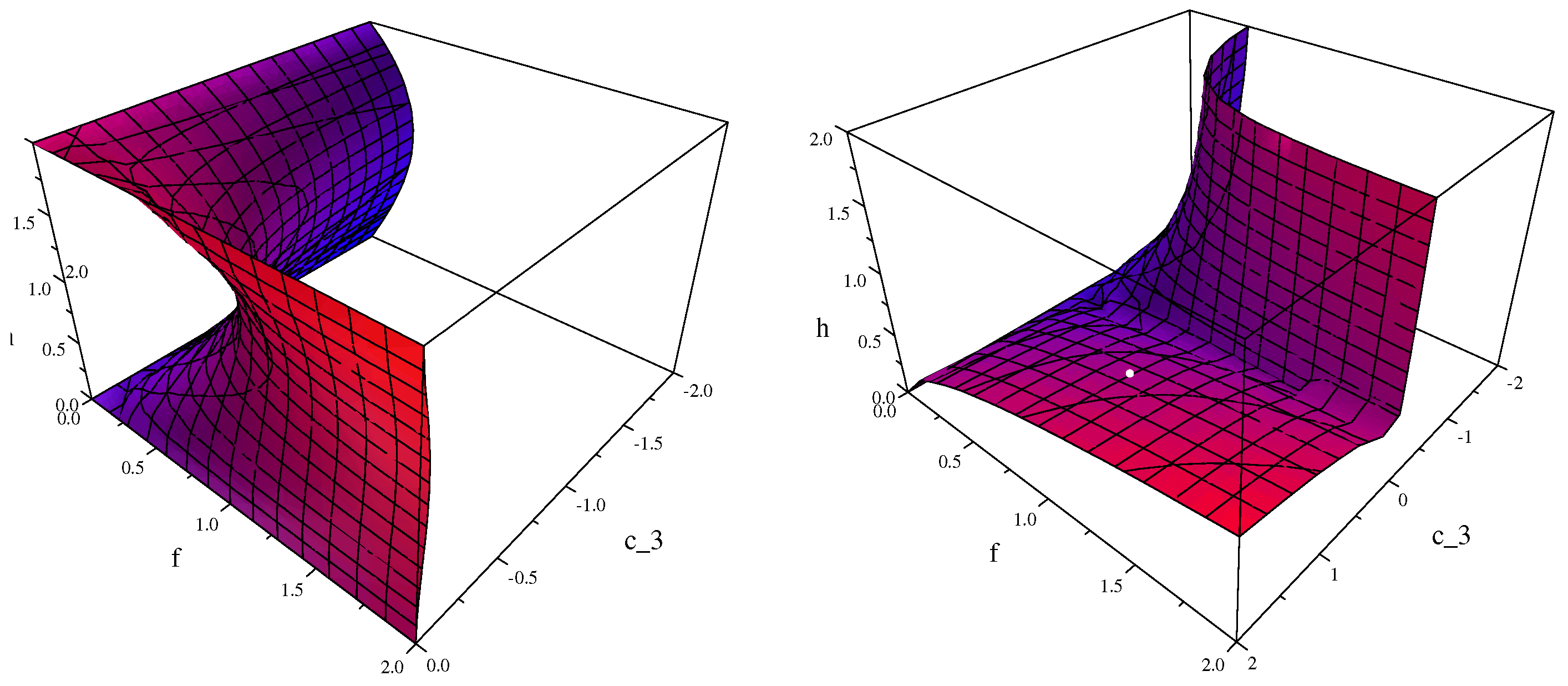
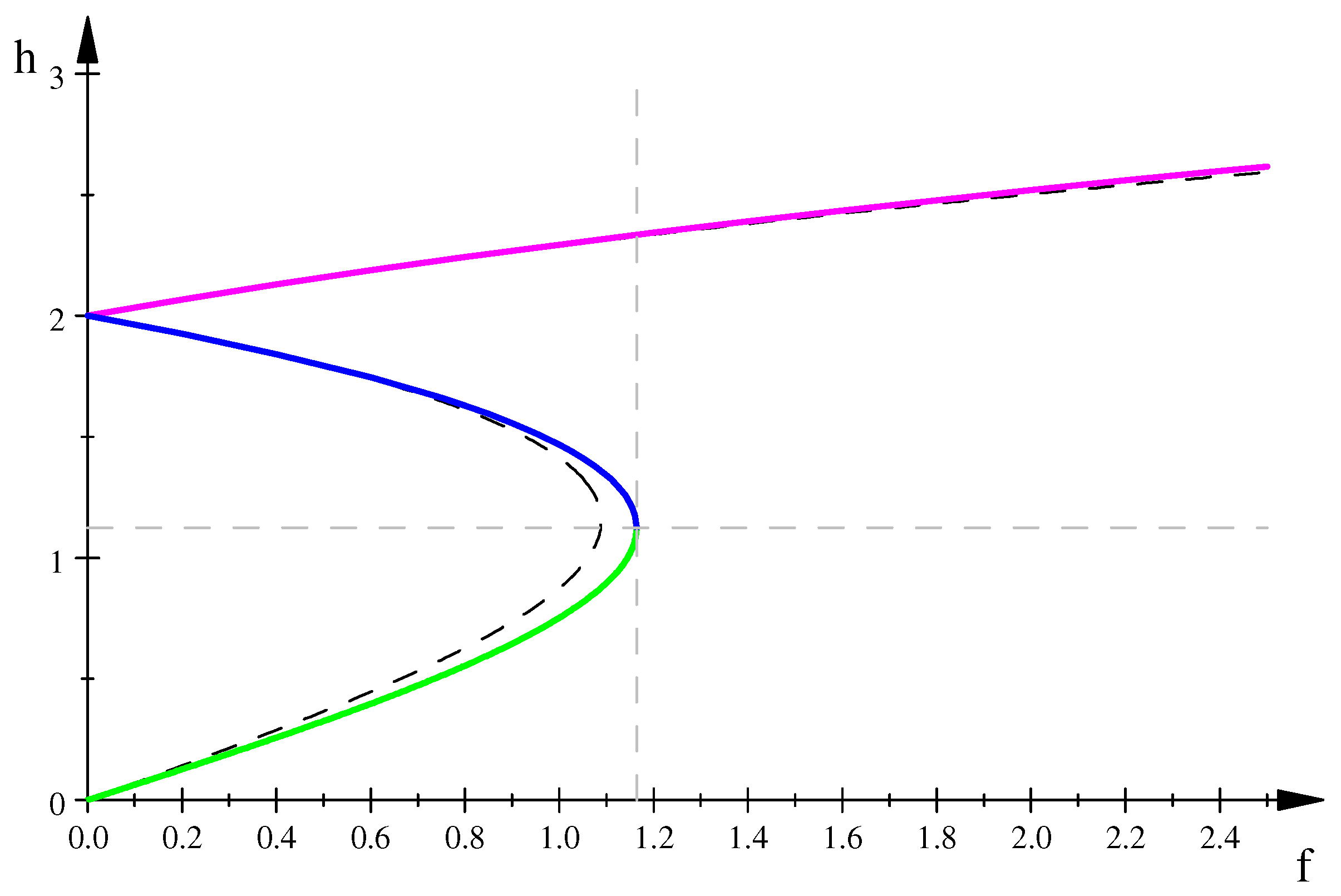

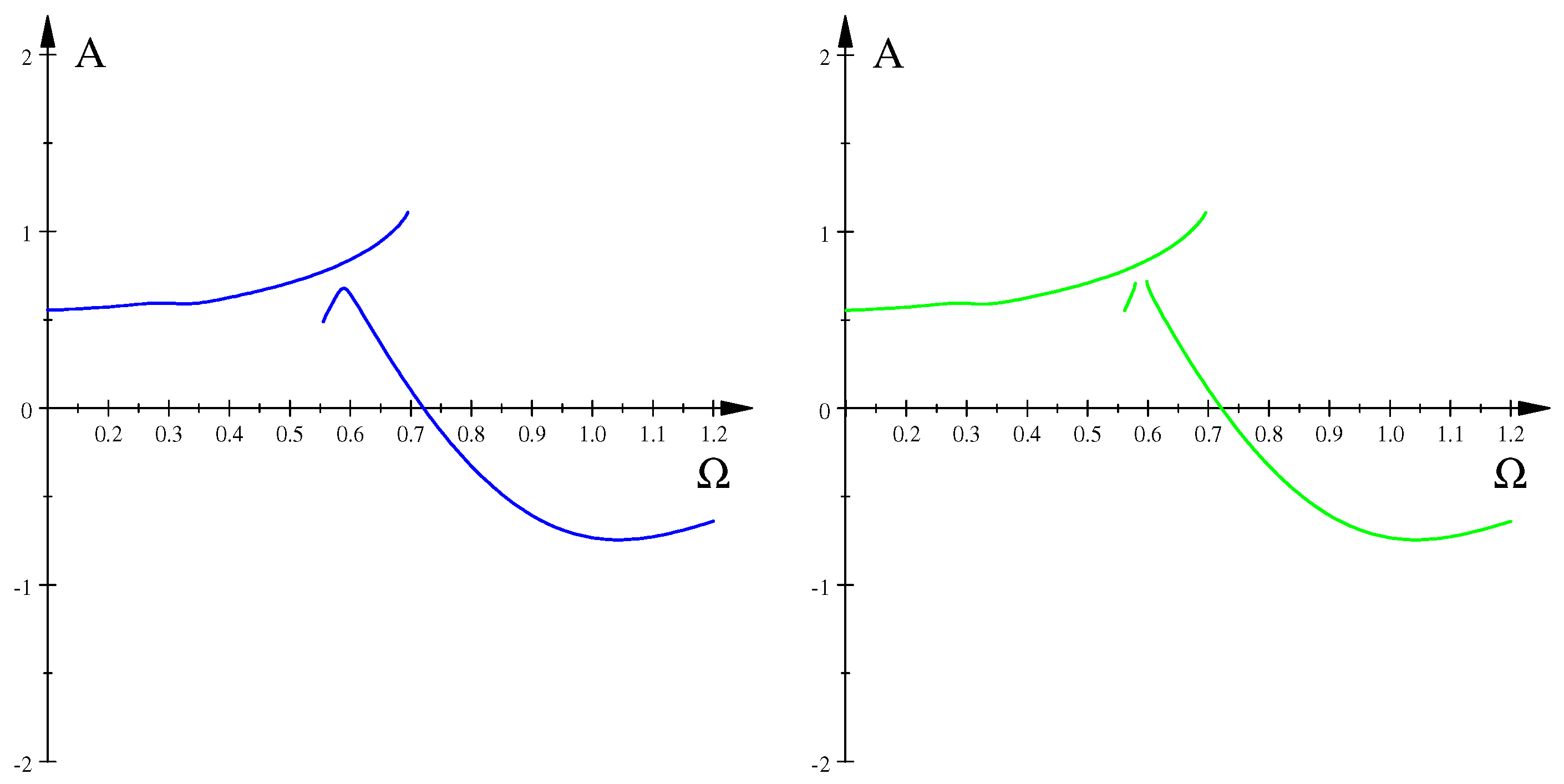
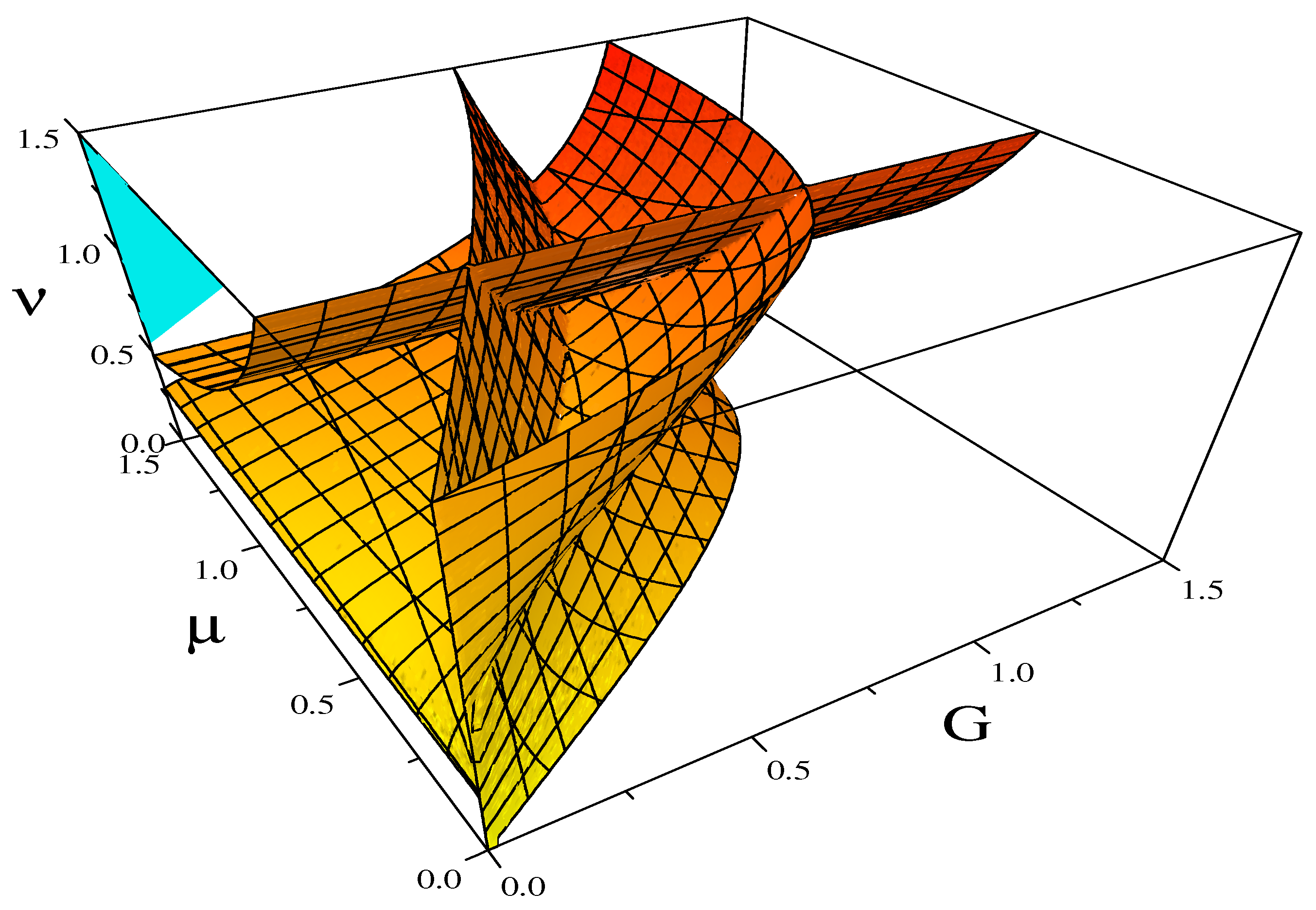
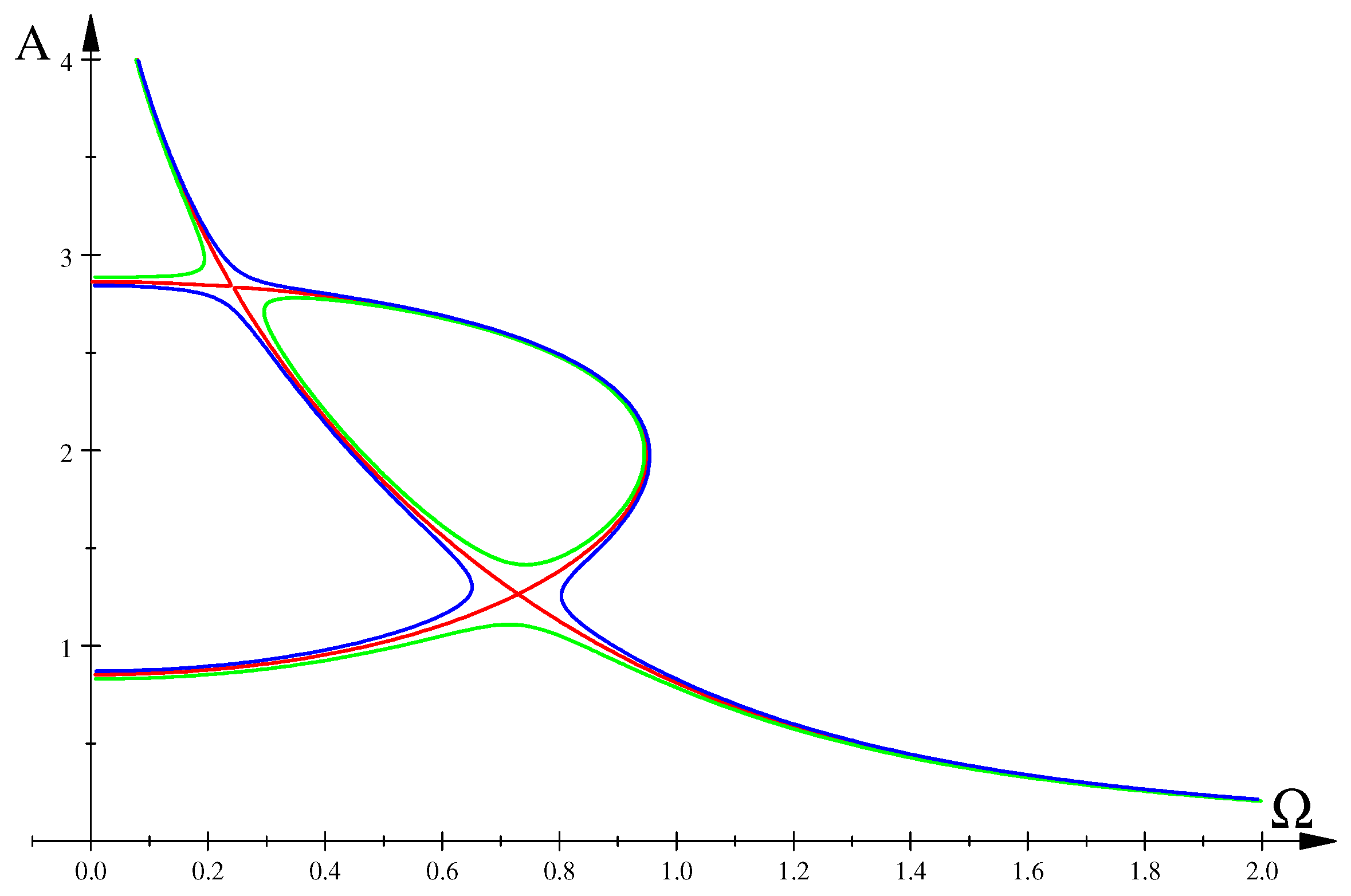

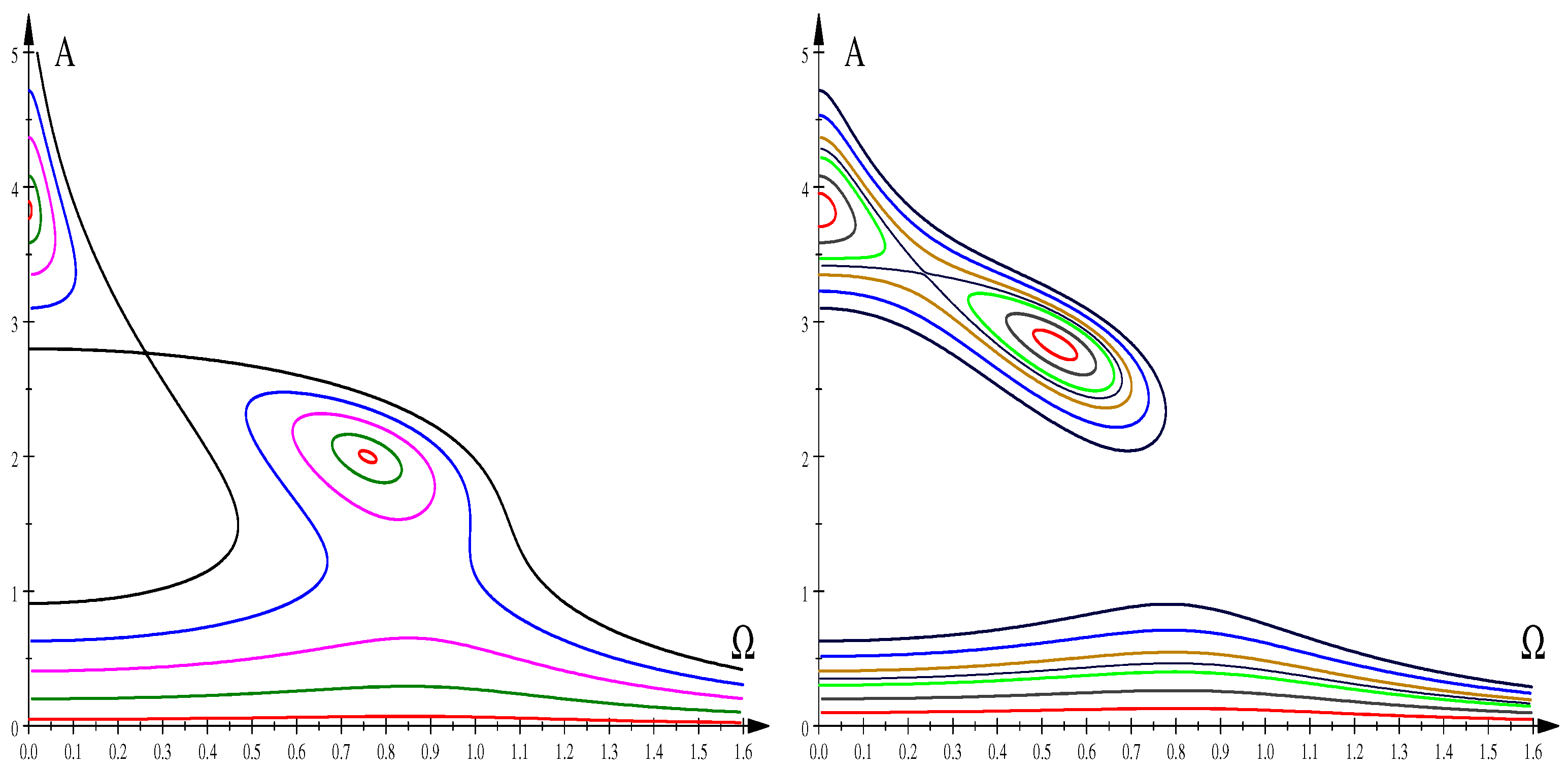
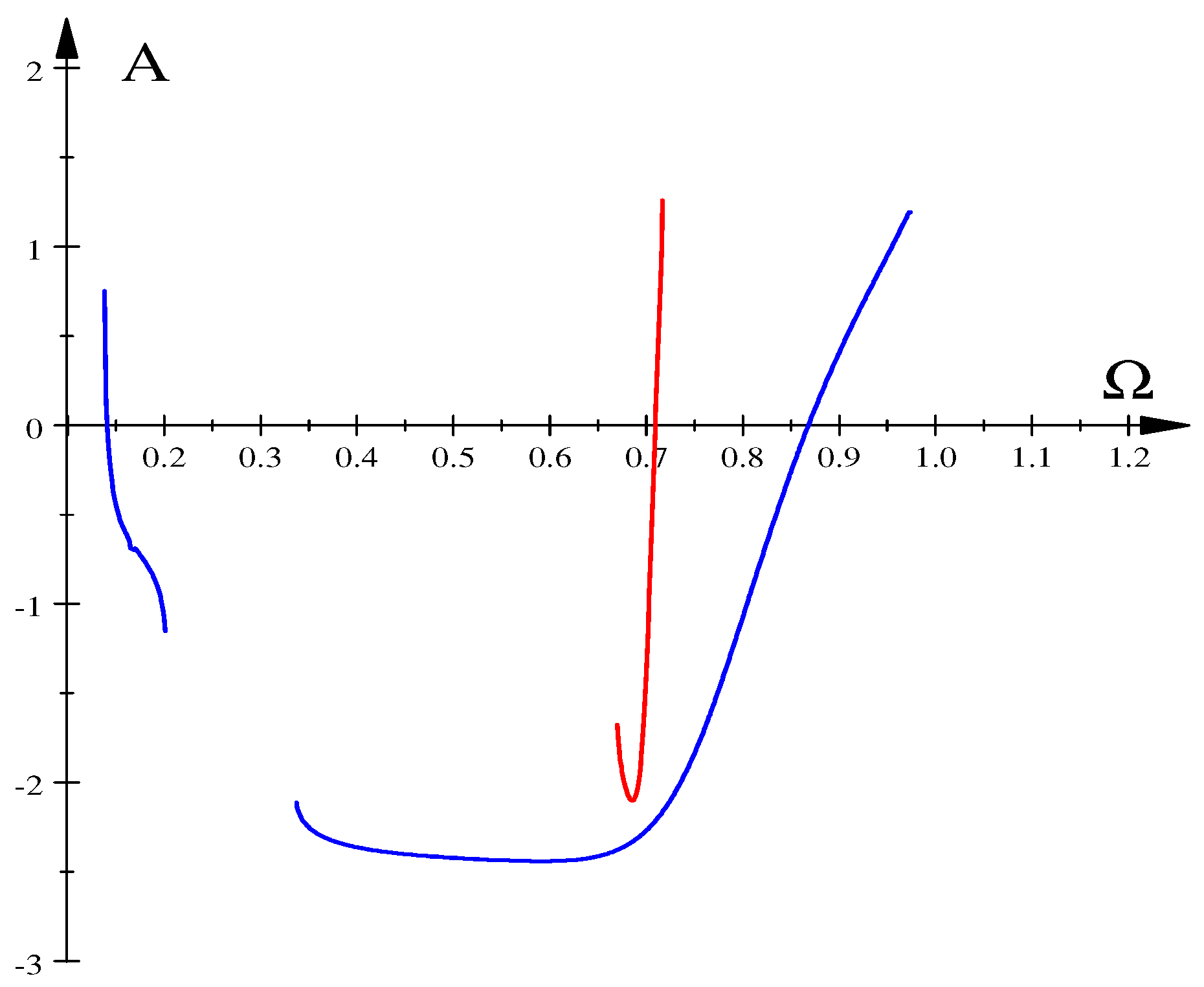
| m | h |
|---|---|
| 1 | |
| 2 | |
| 3 | |
| 4 | |
| 5 | |
| 6 | |
| 7 | |
| 8 |
| m | ||
|---|---|---|
| 1 | ||
| 2 | ||
| 3 | ||
| 4 | ||
| 5 |
Publisher’s Note: MDPI stays neutral with regard to jurisdictional claims in published maps and institutional affiliations. |
© 2022 by the authors. Licensee MDPI, Basel, Switzerland. This article is an open access article distributed under the terms and conditions of the Creative Commons Attribution (CC BY) license (https://creativecommons.org/licenses/by/4.0/).
Share and Cite
Kyzioł, J.; Okniński, A. Localizing Bifurcations in Non-Linear Dynamical Systems via Analytical and Numerical Methods. Processes 2022, 10, 127. https://doi.org/10.3390/pr10010127
Kyzioł J, Okniński A. Localizing Bifurcations in Non-Linear Dynamical Systems via Analytical and Numerical Methods. Processes. 2022; 10(1):127. https://doi.org/10.3390/pr10010127
Chicago/Turabian StyleKyzioł, Jan, and Andrzej Okniński. 2022. "Localizing Bifurcations in Non-Linear Dynamical Systems via Analytical and Numerical Methods" Processes 10, no. 1: 127. https://doi.org/10.3390/pr10010127
APA StyleKyzioł, J., & Okniński, A. (2022). Localizing Bifurcations in Non-Linear Dynamical Systems via Analytical and Numerical Methods. Processes, 10(1), 127. https://doi.org/10.3390/pr10010127






